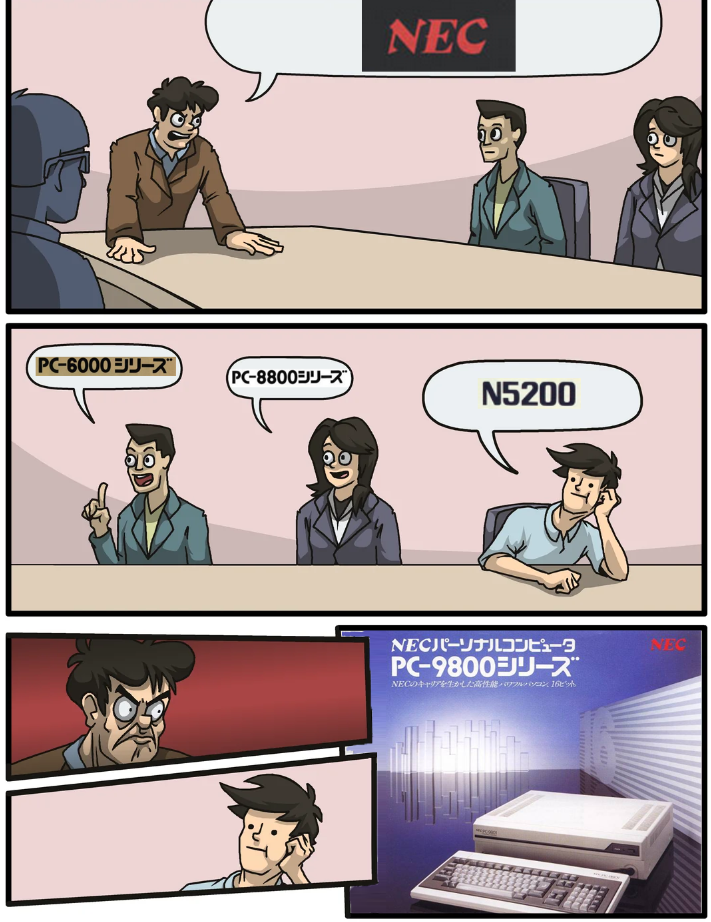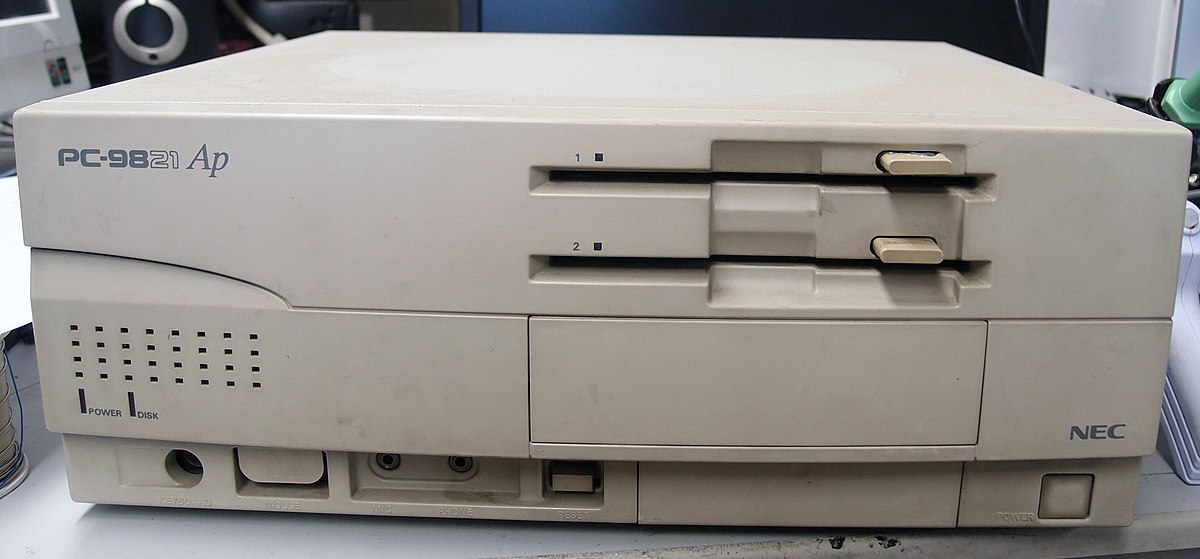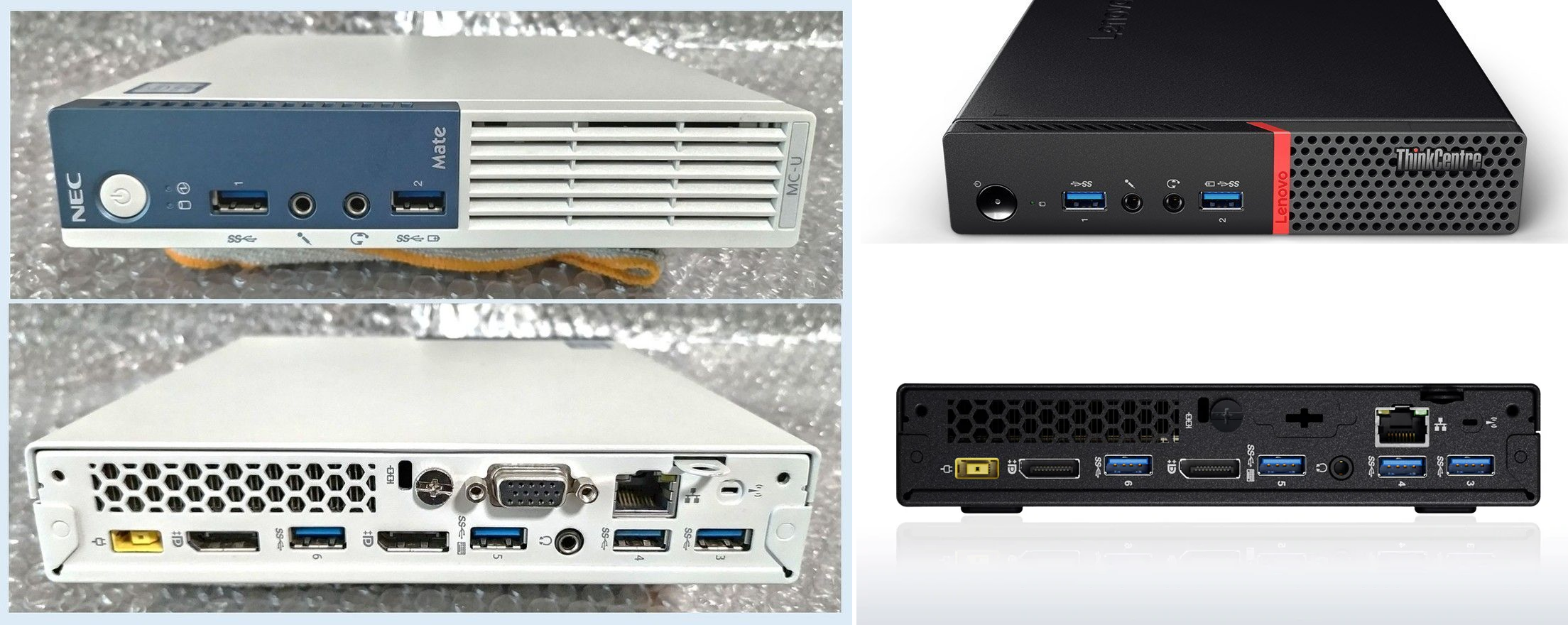history of the PC-9800 series
by quirble, last updated january 15 2025
obviously not everything can be covered here, but here's a flavor of the history of the PC-98.
In 1981, the extremely bloated and nonsensical NEC (Nihon Electric Company) was fighting to build a successful computer that would take Japan by storm. NEC had just split its internal computer development team into 3 competing branches (probably in order to copy IBM - who was quite literally doing the exact same thing (see the IBM PC vs IBM S/23 Datamaster)).
One branch had the NEC PC-8800 series (an 8-bit Z80 personal computer running NEC N88-BASIC), another branch had the NEC N5200 series (a 16 bit x86 personal computer/terminal thing running CP/M-86), and then another branch had the PC-6000 series (MORE pathetic 8-bit Z80 personal computers).
Then NEC decided to make ANOTHER series of personal computers, so they shoved N88-BASIC from the PC-8800 onto the hardware of the NEC N5200 to make the PC-9801, an x86-platform 16 bit personal computer that was somewhat backwards compatible with the PC-8800 but had enough expandibility and options for future business plans. (this also probably immediately ruined sales of the N5200 but that's okay.)

despite coming out after the IBM PC (the PC-9801 came out in 1982), the two systems weren't really that much alike. The PC-9801 didn't have a floppy drive built in at first, which forced users to buy the dual 8-inch drive if they wanted to save and load programs. Additionally, it didn't even have full-scale kanji support unless a kanji expansion board was also purchased and installed. Both of these issues were dealt with in a model that came out a year later. the system had an 8086 processor at first, but soon switched to an NEC in-house chip called the V30 (a faster clone of the Intel 8088).

in 1986, the PC-9801VX was released with an i286 processor and sort of became an industry standard (but a V30 backwards compatibility chip was included until the 1990 PC-9801DA models, allowing 1986-1990 models to run the software released for the 1982-1986 computers.) A lot of software was noted as being specifically compatible with the VX-series even years after faster models like the RA (i386) came out.
additionally, NEC also was dipping their toes in the personal workstation market with the PC-98XA (and later, 98XL, 98RL, and Hyper98) models. These machines were designed for high-resolution graphics design use, being able to output 1120x750 resolution video *in 1986*, but also costing a lot and being relatively unpopular since they couldn't run a lot of fun software (games and whatnot).
in 1992, NEC decided to start making a more diversified lineup of PC-98s called the PC-9821 series. These models slowly started to adapt to PC-compatible standards, eventually just shipping with Windows. This basically was the downfall of the PC-98 lineage as the machines homogenized into Wintel machines complete with PCI slots and generic Wintel case design. By 1997, the last machines were designed, and by 2003, production was ceased entirely.

now, NEC basically just sells rebadged Lenovo ThinkCentres and ThinkPads in the business market. What a way to fall.
